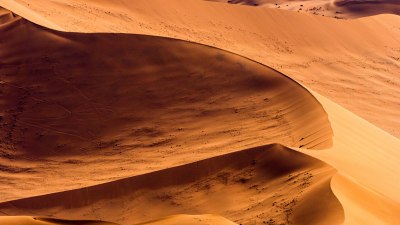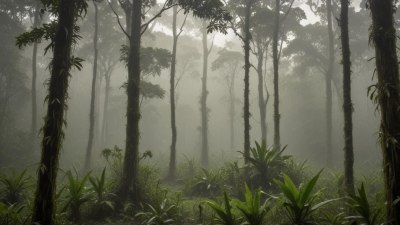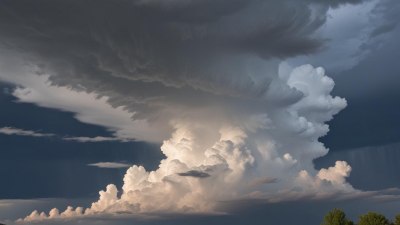The Role of Weather in Desert Formation
Explore how weather patterns and climate contribute to the formation and characteristics of deserts.

Deserts are some of the most fascinating ecosystems on Earth, characterized by their arid conditions and extreme climates. The formation of deserts is a complex process heavily influenced by various weather factors, including temperature, precipitation, and prevailing winds. Understanding the role of weather in desert formation not only provides insight into their unique environments but also highlights the delicate balance of natural systems.
What Defines a Desert?
Before delving into the specifics of weather's role in desert formation, it is essential to define what constitutes a desert. Deserts are generally classified as regions receiving less than 250 mm (10 inches) of rainfall annually. However, this definition spans a wide range of landscapes, from the sun-drenched sands of the Sahara to the cold, barren expanses of Antarctica.
Deserts can be categorized into four primary types: subtropical deserts, cold deserts, coastal deserts, and rain shadow deserts. Each of these types is shaped by its unique climatic conditions and weather patterns, which influence temperature fluctuations, humidity levels, and precipitation rates.
Temperature and Its Impact on Desert Formation
Temperature plays a crucial role in the development and sustainability of desert ecosystems. Most deserts experience high temperatures during the day, often exceeding 40 degrees Celsius (104 degrees Fahrenheit). This extreme heat leads to significant evaporation, reducing the availability of surface water and contributing to arid conditions.
Nighttime temperatures in deserts can plummet drastically, sometimes dropping below freezing. This significant temperature variation can be attributed to the lack of cloud cover, allowing heat to escape rapidly after sunset. The harsh temperature extremes can limit the types of flora and fauna that can survive in these regions, fostering unique adaptations among desert species.
Precipitation Patterns and Desert Development
One of the most critical factors in desert formation is precipitation, or the lack thereof. Typically, deserts receive limited rainfall, which significantly affects soil moisture levels, plant growth, and overall ecological health. Many deserts experience sporadic rainfall, which may occur in intense bursts followed by long dry spells.
Climate change has introduced additional variability in precipitation patterns, further influencing desertification processes and the expansion of desert regions. Areas that may once have supported more lush environments can rapidly transition to desert landscapes due to declining rainfall and altered weather patterns.
The Influence of Winds in Desert Formation
Winds are another significant weather factor contributing to the characteristics of deserts. In many deserts, prevailing winds carry moisture away from the region, preventing rainfall. For example, the Sahara Desert is influenced by the northeastern trade winds, which divert moisture-laden air away from the desert.
Wind patterns can also lead to the formation of distinctive desert features, such as sand dunes. Wind erosion plays a critical role in shaping the landscape, creating unique geological formations and transporting sand across vast distances. Understanding wind dynamics in deserts is crucial for studying their ecosystems and managing potential desertification threats.
Human Impact on Desert Formation
While weather and climate play dominant roles in the formation of deserts, human activities have exacerbated desertification processes in many regions. Deforestation, overgrazing, and unsustainable agricultural practices contribute to soil degradation, reducing vegetation cover and increasing susceptibility to erosion.
Urbanization and infrastructure development can also alter local weather patterns, reducing the ability of regions to retain moisture. Additionally, climate change induced by human activities exacerbates existing weather patterns, leading to reduced rainfall and increased temperatures, further enhancing desert conditions.
Case Studies of Desert Formation
To provide a comprehensive understanding of the role of weather in desert formation, it is helpful to examine specific case studies. The Sahara Desert, for example, has evolved over millennia due to various climatic changes, including shifts in the Earth's orbit and axial tilt. These changes have led to periods of increased humidity, allowing for the flourishing of once-lush vegetation and the subsequent aridification of the region.
In contrast, the Mojave Desert illustrates the impact of rain shadow effects. Situated between the Sierra Nevada mountain range and the Pacific Ocean, the Mojave receives minimal rainfall due to the barrier created by the mountains, which block moisture-laden winds from reaching the desert.
Desert Ecosystems and Biodiversity
Deserts, despite their harsh conditions, are home to a remarkable array of biodiversity. Many plants and animals have adapted to survive in these environments, showcasing resilience in the face of adversity. For instance, cacti have developed specialized structures to store water, while nocturnal animals have adjusted their behavior to avoid the daytime heat.
The interdependence between weather conditions and the biological components of deserts reveals the intricate balance of life within these ecosystems. Understanding how weather influences desert biodiversity is crucial for promoting conservation efforts and mitigating the impacts of climate change.
Future of Deserts in a Changing Climate
Looking ahead, the impacts of climate change on weather patterns will continue to affect desert formation and expansion. As global temperatures rise, regions that are currently borderline deserts may experience further aridification, leading to significant shifts in local ecosystems and biodiversity.
It is essential for scientists and policymakers to examine the connections between weather, climate, and desertification processes to create effective strategies for managing and mitigating these changes. Addressing the consequences of climate change on deserts will require coordinated efforts at local, national, and international levels, focusing on sustainable practices and ecosystem preservation.
Understanding the role of weather in desert formation is vital for appreciating the complexity and beauty of these ecosystems. From temperature and precipitation to wind patterns, the interplay of weather factors shapes the unique environments found in deserts worldwide. Increased awareness of these processes can help inform conservation strategies and foster greater appreciation for the delicate balance of natural systems. As the climate continues to evolve, ongoing research will be crucial for understanding and mitigating the impacts of weather on desert ecosystems, ultimately ensuring their survival for future generations.











